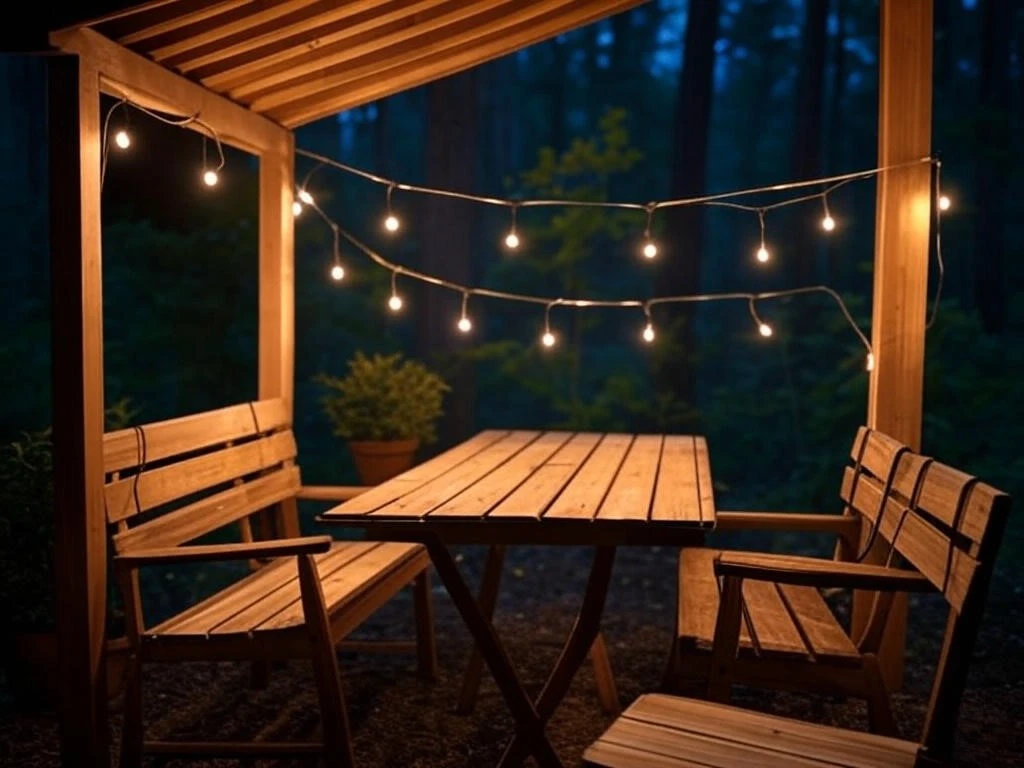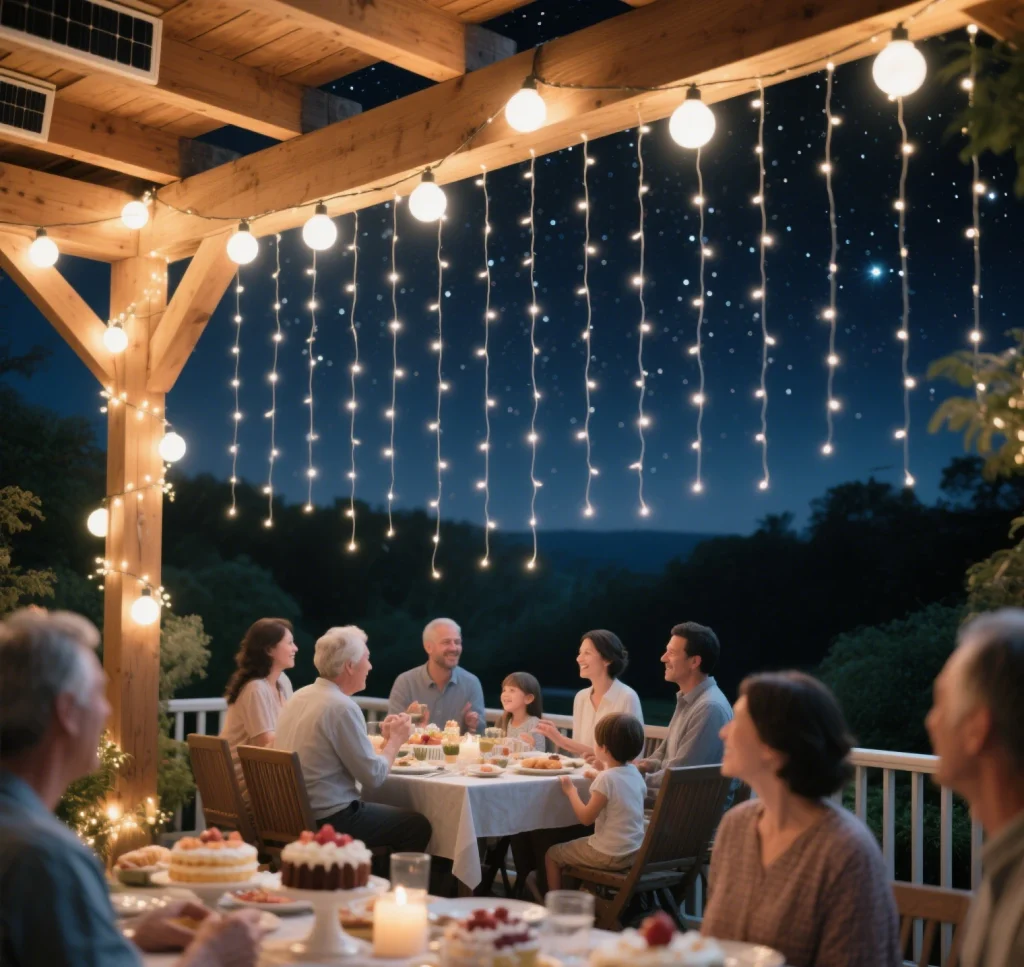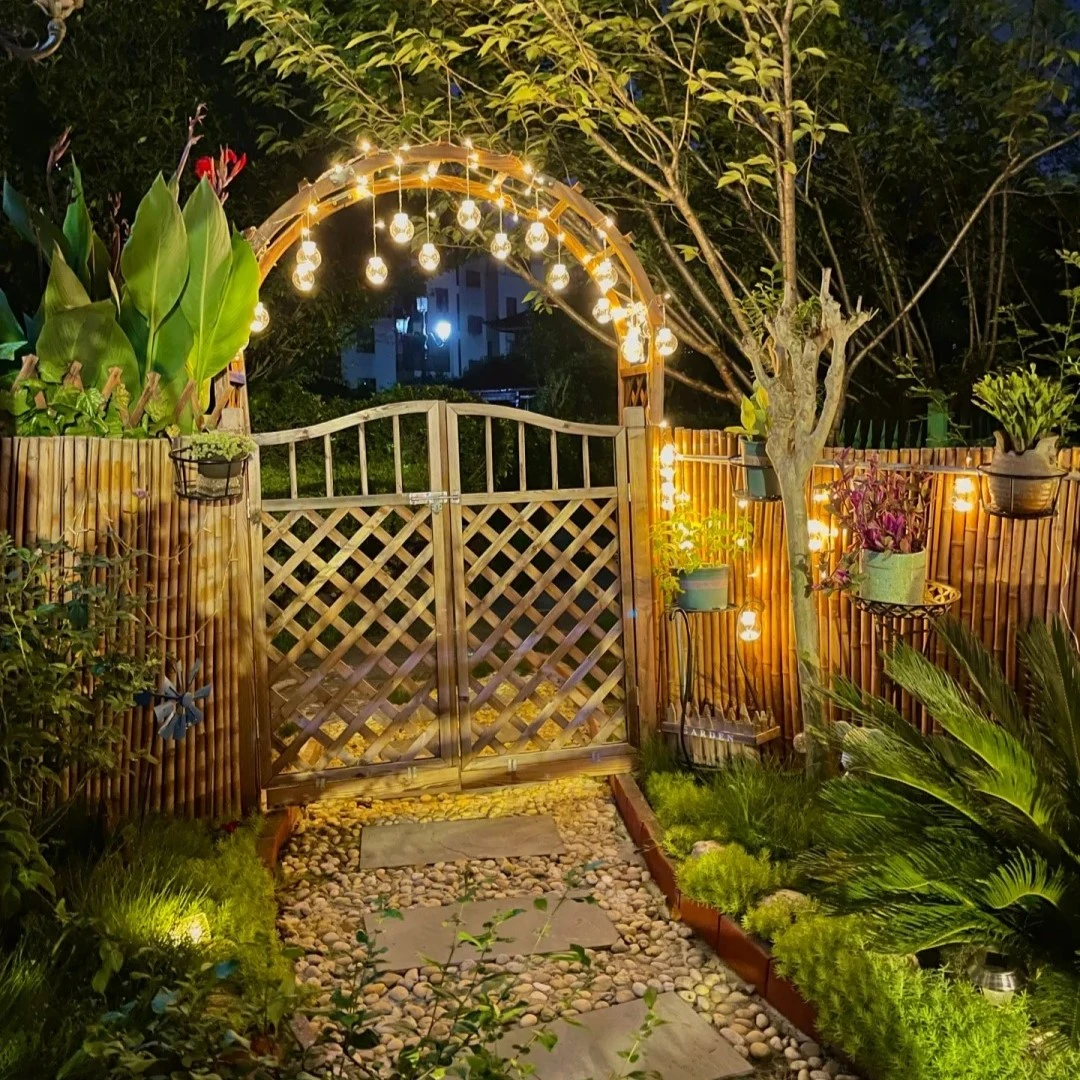Red Solo cup string lights are a fun, festive, and budget-friendly way to add a playful vibe to your outdoor gatherings, parties, or backyard decor. Combining the iconic red plastic cups with LED string lights, this DIY project transforms simple materials into vibrant party lighting that’s perfect for summer barbecues, game nights, or casual get-togethers. This article provides a step-by-step guide to creating your own red Solo cup string lights, incorporating solar-powered options for eco-friendly illumination, along with safety tips, creative variations, and troubleshooting advice to ensure a dazzling result.

Why Choose Red Solo Cup String Lights?
The red Solo cup is a cultural staple, synonymous with lively gatherings and celebrations. Pairing these cups with LED string lights creates a unique, eye-catching outdoor lighting solution that’s both affordable and customizable. According to a 2015 tutorial from Premeditated Leftovers, red Solo cup string lights are easy to make and add a festive flair to any event. By using solar string lights, you can enhance sustainability, harnessing solar energy to power your decor without increasing your electricity bill. This project is ideal for DIY enthusiasts of all skill levels, requiring minimal tools and materials.
Materials Needed
To create red Solo cup string lights, gather the following materials, which are widely available at craft stores, online retailers like Amazon, or local supermarkets:
- Red Solo cups (16 oz or mini cups, depending on preference)
- LED string lights (C7 or C9 bulbs for standard cups, mini LEDs for smaller cups)
- Solar string lights (optional, for eco-friendly setups)
- A half-inch drill bit or craft knife
- Scissors or a razor knife
- Measuring tape or ruler
- Optional: colored cups, decorative tape, or paint for customization
- Optional: solar panel and rechargeable battery for solar setups
For solar-powered versions, ensure the solar string lights have a solar panel with at least 1W–2W capacity and a rechargeable battery (600–2000 mAh) to support 6–8 hours of illumination, as recommended by a 2023 Footprint Hero guide.
Step-by-Step Guide to Making Red Solo Cup String Lights
Follow these steps to create your red Solo cup string lights, ensuring a secure and visually appealing result:
Step 1: Prepare the Red Solo Cups
Start by preparing the red Solo cups. Decide whether you’re using standard 16 oz cups or mini cups for a more compact look. Using a half-inch drill bit or a craft knife, carefully cut a hole in the bottom of each cup, sized to fit the base of your LED bulbs. A 2024 HomeHacks tutorial emphasized that the hole should be snug to hold the bulb securely without slipping. Test one cup to ensure the bulb fits tightly before cutting the rest. For solar string lights, confirm the bulbs are compatible with low-voltage systems (typically 5V–12V).
Safety Tip: Wear gloves when using a craft knife to avoid cuts, and work on a stable surface to prevent accidents.
Step 2: Insert the LED Bulbs
Insert each LED bulb through the hole in the bottom of a red Solo cup, from the inside out, so the bulb’s base extends through the hole and screws into the socket on the LED string lights. This locks the cup in place. A 2013 Instructables guide noted that C7 bulbs are ideal because they don’t generate enough heat to melt the plastic cups, ensuring safety for outdoor lighting. For solar string lights, ensure the bulbs are energy-efficient (0.02–0.05W per bulb) to maximize battery life.
Work in a slightly dim environment to check bulb alignment, and test the lights periodically to confirm they’re functioning. If using solar-powered lights, connect the solar panel to the string and place it in direct sunlight to charge the rechargeable battery.
Step 3: Secure and Hang the Lights
Once all cups are attached, hang your red Solo cup string lights using cup hooks, zip ties, or adhesive clips. Avoid piercing the wire with staples, as this can damage the circuit, according to a 2025 Spruce article. For outdoor lighting, position the lights along patios, fences, or pergolas, ensuring the solar panel (if used) faces south for maximum sunlight exposure. Use a measuring tape to space the cups evenly, typically 6–12 inches apart, for a balanced look.
For solar string lights, secure the solar panel using a ground stake or wall mount, as suggested by a 2025 BBC Gardeners’ World review. If using plug-in LED string lights, ensure access to a weatherproof outdoor outlet.
Step 4: Test and Adjust
Test the lights at dusk to assess brightness and functionality. Solar string lights typically have a dusk-to-dawn sensor, automatically turning on when it gets dark. If the lights don’t illuminate, check the rechargeable battery charge or the solar panel’s position. Adjust cup placement for aesthetic appeal, ensuring they’re secure to withstand wind or rain. For added durability, use weatherproof connectors with an IP65 rating to protect against moisture.
Incorporating Solar Power for Eco-Friendly Lighting
Using solar string lights enhances the sustainability of your red Solo cup string lights. A 2010 Instructables guide outlined a simple circuit for solar-powered LED string lights using a 2V solar panel, a QX5251F IC, and a rechargeable battery. This setup ensures automatic on/off functionality and efficient charging. A solar panel of 1W–2W can charge a 1000 mAh battery in 6–8 hours of direct sunlight, powering 10–20 LED bulbs for 6–10 hours.
To build a solar-powered version, connect the LED string lights to a charge controller and battery, housed in a weatherproof enclosure to protect against bugs or moisture, as noted in a 2017 Instructables project. This setup is ideal for off-grid locations, reducing reliance on traditional power sources and aligning with eco-friendly party lighting trends.

Creative Variations and Customization
Elevate your red Solo cup string lights with these creative ideas:
- Color Variations: Use cups in different colors (e.g., blue, white, or patterned) for a vibrant effect, as suggested in a 2024 HomeHacks tutorial. Mix and match for themed parties like holidays or sports events.
- Decorative Accents: Add glitter, stickers, or paint to the cups for a personalized touch. Transparent cups with LED bulbs can create a glowing lantern effect.
- Floating Displays: For poolside parties, use waterproof solar string lights and float cups in shallow containers, as recommended in a 2024 Anawalt Lumber blog.
- Themed Patterns: Arrange cups in shapes like stars or hearts for unique party lighting displays, perfect for weddings or birthdays.
A unique idea from a 2024 Bitpott discussion involves adding translucent film inside the cups to diffuse light, creating a softer glow for intimate settings.
Safety Considerations
Safety is crucial when crafting red Solo cup string lights. Use LED bulbs to avoid heat-related risks, as they produce minimal heat compared to incandescent bulbs, which could melt plastic cups. Ensure all components, especially weatherproof connectors and solar panels, have an IP65 rating or higher for outdoor use. A 2024 CPSC report emphasized checking for UL 588 or CSA C22.2 NO. 37-20 certifications to ensure compliance with safety standards.
For solar-powered setups, protect the rechargeable battery and charge controller from extreme temperatures (above 25°C or below 0°C) to maintain performance. Regularly inspect wires for fraying or rodent damage, especially in garden settings.
Troubleshooting Common Issues
If your red Solo cup string lights don’t work, consider these common issues:
- Dim or No Light: For solar string lights, the solar panel may not be getting enough sunlight. Reposition it or clean debris. Check the rechargeable battery for degradation and replace if needed (typically after 1–2 years).
- Loose Cups: If cups slip off, the holes may be too large. Use adhesive tape or foam to secure them.
- Flickering Lights: This could indicate loose weatherproof connectors or incorrect polarity in solar-powered setups. Flip the wires, as LED bulbs are polarity-sensitive, per a 2017 Instructables guide.
- Short Runtime: A low-capacity battery or small solar panel may not support all LED bulbs. Upgrade to a 2000 mAh battery or 2W panel.
Maintenance and Storage
To extend the life of your red Solo cup string lights:
- Clean Regularly: Remove dirt from the solar panel and cups to maintain efficiency and appearance.
- Store Properly: During off-seasons, store lights indoors to protect from harsh weather. Remove rechargeable batteries to prevent corrosion.
- Inspect Components: Check wires, LED bulbs, and weatherproof connectors for wear before each use.
Conclusion
Creating red Solo cup string lights is a simple, affordable, and creative way to enhance your outdoor lighting for any occasion. By combining red Solo cups with LED string lights or solar string lights, you can craft a sustainable, festive display that’s sure to impress. With minimal tools, a focus on safety, and room for customization, this DIY project offers endless possibilities for party lighting. Whether powered by solar energy or plug-in sources, your red Solo cup string lights will bring charm and ambiance to your next gathering, making it a memorable event.


Leave a Reply